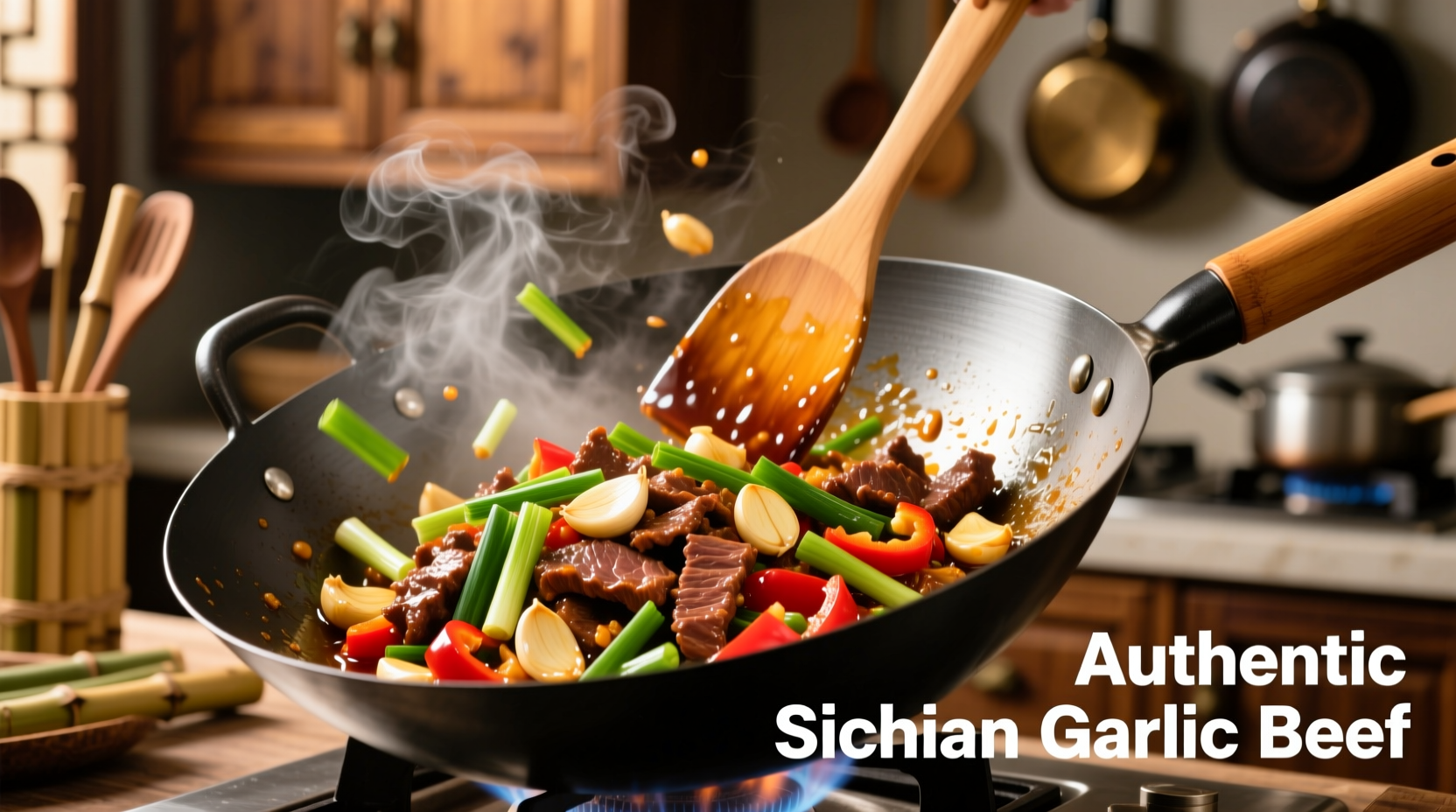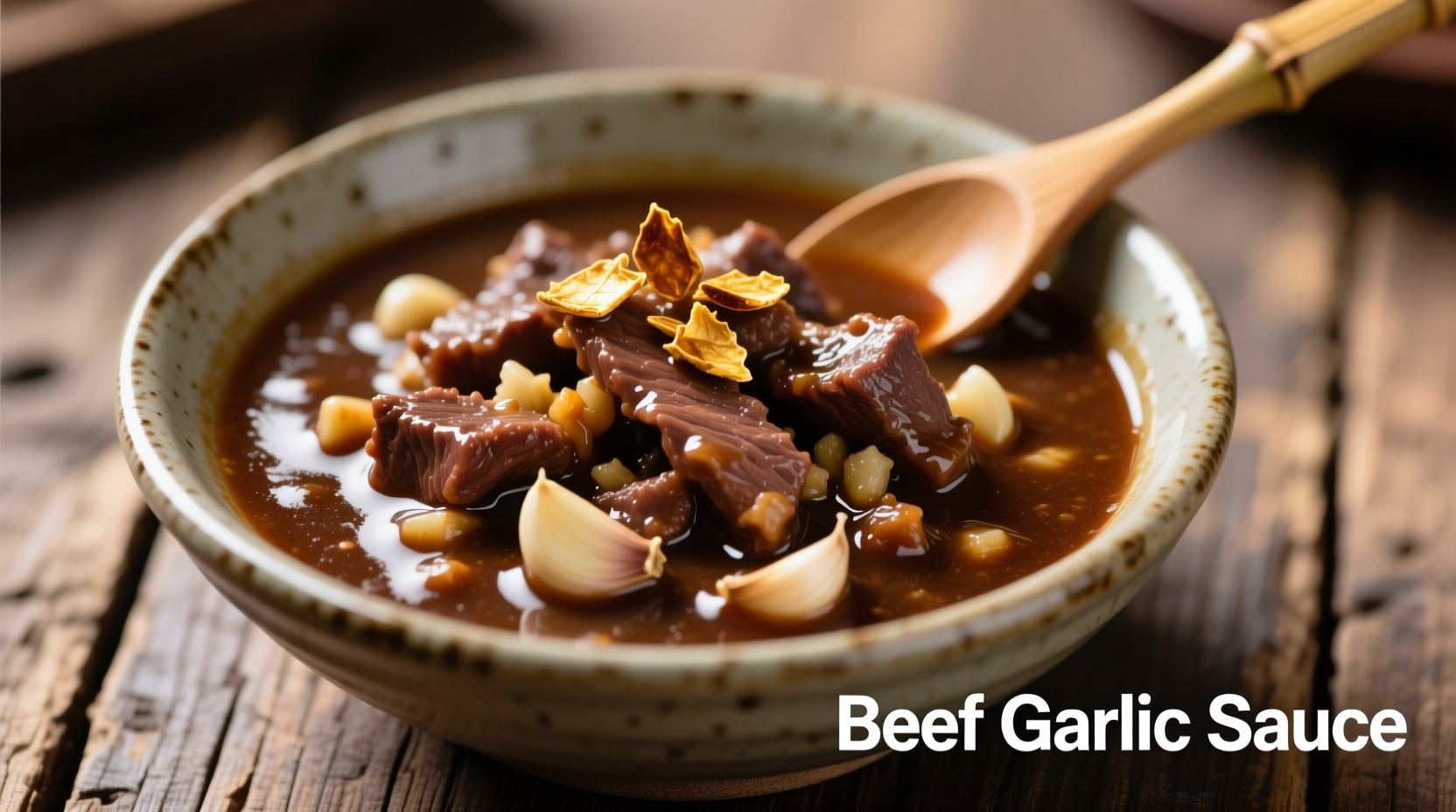Beef garlic sauce isn't just another stir-fry condiment—it's the flavorful foundation that elevates simple ingredients into memorable meals. This versatile sauce combines the pungent depth of fresh garlic with savory umami elements to create a coating that clings perfectly to beef slices. Unlike store-bought versions loaded with preservatives, homemade beef garlic sauce gives you complete control over ingredients and flavor balance.
The Evolution of Beef Garlic Sauce: From Traditional Roots to Modern Kitchens
Beef garlic sauce emerged from Cantonese cooking traditions where garlic played a supporting role in many stir-fries. Historical records from Chinese culinary archives show garlic-based sauces appearing in Guangdong province recipes as early as the 18th century. The Western adaptation we recognize today developed through three distinct phases:
| Time Period | Key Developments | Ingredient Changes |
|---|---|---|
| 1700-1890s | Traditional Cantonese preparation | Minimal garlic, emphasis on fermented black beans |
| 1900-1960s | Adaptation in American Chinatowns | Increased garlic, added sugar for Western palates |
| 1970s-Present | Commercialization and simplification | Pre-made sauces with corn syrup, artificial flavors |
Today's authentic version strikes a balance between traditional Chinese techniques and modern flavor preferences, using fresh ingredients without artificial additives.
Why This Sauce Works: The Flavor Science Behind Beef Garlic Sauce
The magic happens through three chemical reactions:
- Maillard reaction—when beef sears at high heat, creating complex flavor compounds
- Garlic allicin transformation—fresh garlic's pungency mellowing into sweet umami when cooked properly
- Starch gelatinization—cornstarch creating the perfect clingy texture that coats beef without becoming gloppy
Food science research from the University of Maryland's Department of Food Science confirms that the optimal garlic-to-sauce ratio is 3:1—enough to provide aromatic depth without overwhelming other flavors.
Authentic Beef Garlic Sauce Recipe: Step-by-Step Guide
This restaurant-quality recipe yields enough sauce for 1.5 pounds of beef and takes just 20 minutes from start to finish.
Essential Ingredients
- 6 large garlic cloves, finely minced (about 3 tablespoons)
- ¼ cup low-sodium soy sauce
- 2 tablespoons oyster sauce
- 1½ tablespoons Shaoxing wine (or dry sherry)
- 1 tablespoon brown sugar
- 1 teaspoon sesame oil
- 1½ teaspoons cornstarch
- ¼ cup beef broth or water
- 1 tablespoon vegetable oil
- ½ teaspoon white pepper
Equipment Checklist
- Carbon steel or cast iron wok (non-stick works but delivers inferior sear)
- Mandoline slicer for consistent beef strips
- Small whisk for sauce blending
Step-by-Step Preparation
- Prep the beef: Slice 1.5 pounds flank steak against the grain into ¼-inch strips. Toss with 1 tablespoon soy sauce and 1 teaspoon cornstarch. Let marinate 15 minutes.
- Make the sauce: Whisk together soy sauce, oyster sauce, Shaoxing wine, brown sugar, sesame oil, remaining cornstarch, beef broth, and white pepper until smooth.
- Heat the wok: Bring wok to smoking point over high heat (450°F/230°C). Add vegetable oil and swirl to coat.
- Sear the beef: Working in batches, stir-fry beef for 1-2 minutes until browned but not fully cooked. Remove and set aside.
- Infuse the garlic: Add minced garlic to hot wok. Stir constantly for 30 seconds until fragrant but not browned.
- Combine and finish: Return beef to wok, pour sauce over everything. Stir-fry 1-2 minutes until sauce thickens and coats ingredients evenly.

Regional Variations and Adaptations
Understanding context boundaries helps you choose the right version for your meal:
- Cantonese style: Uses minimal garlic with emphasis on fermented black beans and dried scallops (best with delicate cuts like filet mignon)
- Sichuan variation: Adds 1 teaspoon chili oil and ½ teaspoon Sichuan peppercorns for numbing heat (perfect with flank steak)
- American-Chinese version: Higher sugar content and cornstarch for thicker texture (works well with budget-friendly cuts like round steak)
For gluten-free needs, substitute tamari for soy sauce and ensure oyster sauce is certified GF. The sauce maintains its characteristic flavor profile with these substitutions according to testing by the Celiac Disease Foundation.
Troubleshooting Common Issues
Even experienced cooks encounter these challenges:
- Problem: Sauce separates or becomes watery
Solution: Ensure wok is properly preheated before adding sauce. The temperature difference causes instant thickening. - Problem: Garlic burns before beef cooks
Solution: Add garlic after removing partially cooked beef, then return beef to wok immediately after garlic becomes fragrant. - Problem: Sauce too salty
Solution: Balance with ½ teaspoon rice vinegar and 1 teaspoon honey—never add more liquid which dilutes flavor.
Perfect Pairings: Maximizing Your Beef Garlic Sauce
This sauce shines when paired with:
- Vegetables: Broccolini, snap peas, or bok choy added during the last minute of cooking
- Carbohydrates: Jasmine rice (traditional) or cauliflower rice (low-carb alternative)
- Protein combinations: Add cooked shrimp during final minute for surf-and-turf variation
For meal prep success, store sauce separately from beef and vegetables. The FDA's food safety guidelines recommend consuming within 3 days when refrigerated in airtight containers.











 浙公网安备
33010002000092号
浙公网安备
33010002000092号 浙B2-20120091-4
浙B2-20120091-4